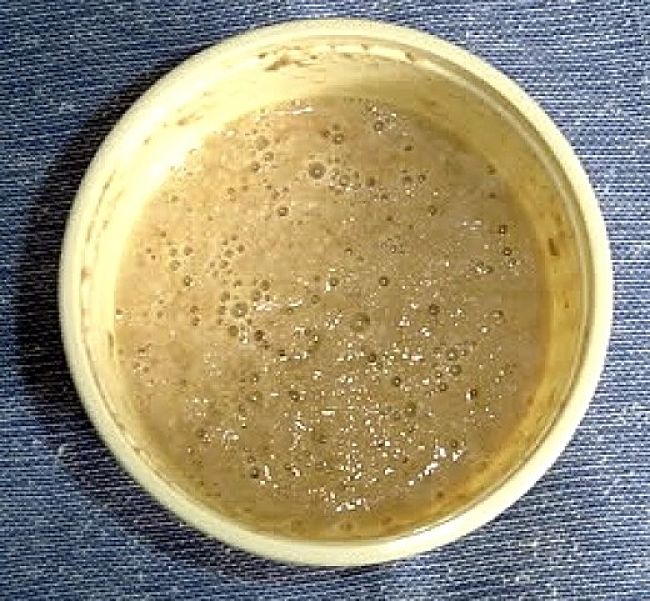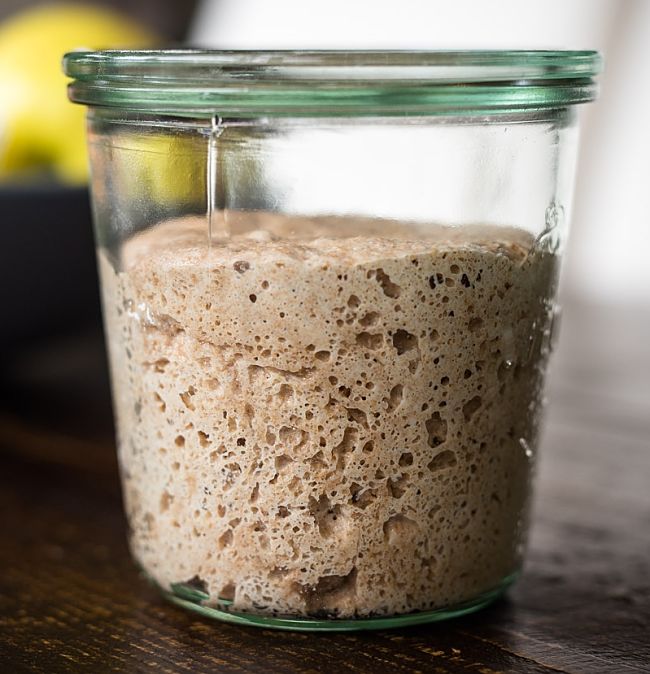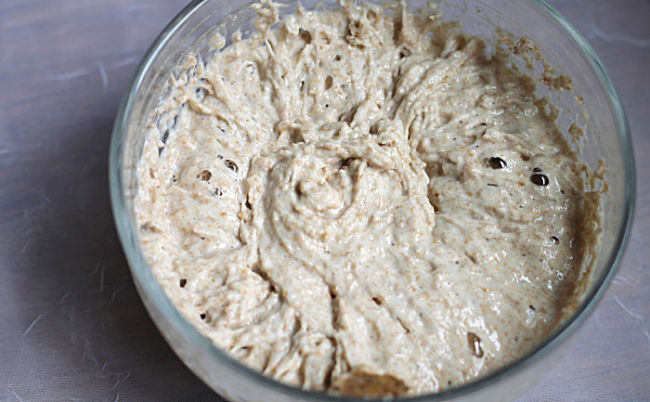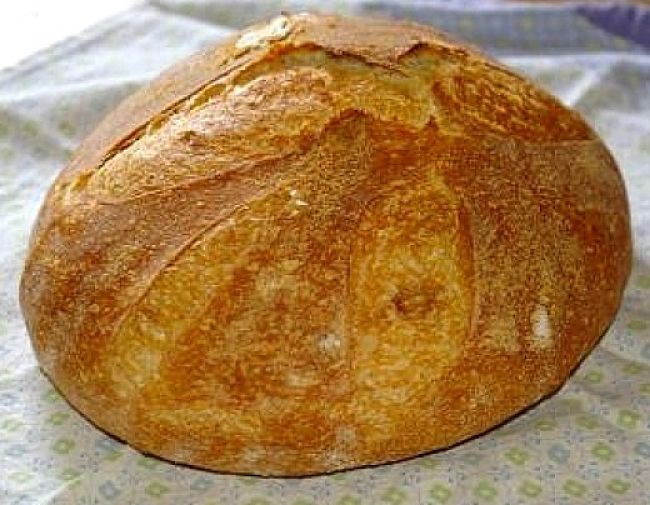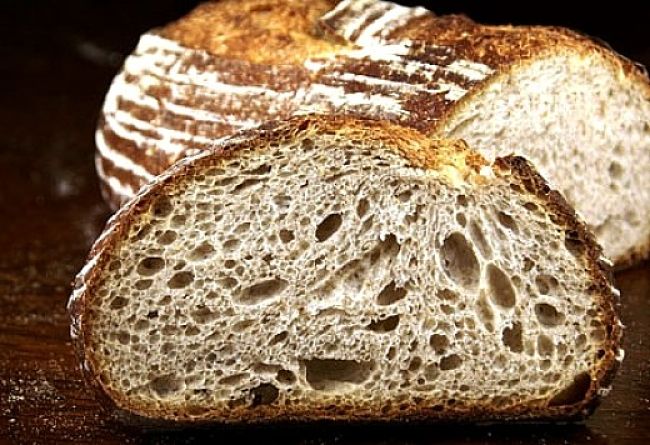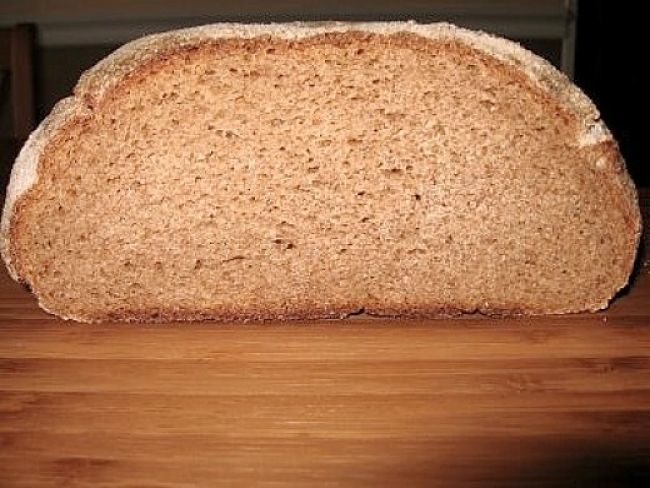How to Make Sourdough Bread - The Starter, Great Recipes, Best Ever Tips
Home make sourdough bread is fabulous and heavenly bread with a hearty, tangy flavor made using wild yeast that you capture from the air and develop in the sourdough starter. Alternatively you can get a sample from one of your friends or a commercial supplier. The natural yeasts are accompanied by acid-producing bacteria similar to that in yogurt, and the taste resembles a quality yogurt.
Making sourdough bread at home requires patience because the natural yeast are much slower than the commercial varieties with the rising taking 4-8 hours rather than 30 minutes for commercial yeasts. Legend has it that the old gold miners used to mix a batch of bread dough in the morning and by evening it would be ready to bake. But the delay is certainly worth it for the extra flavor and you can schedule the rise to fit in with your other activities. You will also require knowledge and the willingness experiment because it takes time to learn the process and the techniques. If you want bread fast, then sourdough is not the answer and you can use one of those bread-makers.
The initial culture of the sourdough starter may take at least 7 days or more to prepare, so you need to be patient.
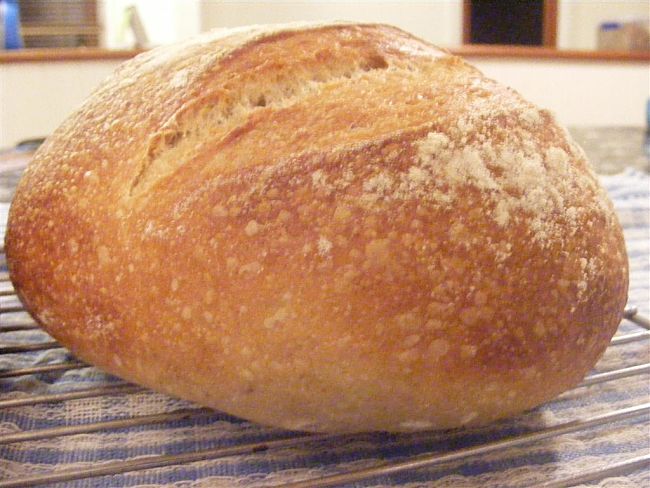
Sourdough Starter
The carbon dioxide generating organisms in ordinary bread is the highly cultivated baker's yeast - Saccharomyces cerevisiae. The reason why most conventional breads recipes require sugar or honey is because baker's yeast mostly works on simple sugars. In fact, brewers yeast and bakers yeast are very closely related, being different strains of the same species. Some old time bakers about 80 years ago tried live brewers yeast in their dough when the old bakers yeast was unavailable. Since then that same yeast has been used for both, though the baker's have developed their own strain of the species.
In contrast, commercial sourdough bread starters consist of a combined culture of a bacteria Lactobacillus sanfranciscensis and various yeast species such as or Saccharomyces exiguus and Candida milleri . Both of these yeasts don't require sugar but break down the complex carbohydrates in the flour to produce carbon dioxide. The Lactobacillus generates the acid conditions that favours the growth of the yeasts and also produces the acid flavour.
Simplest Method for Developing your own Starter
Milk Method - You start with about a cup of skim milk, either fresh or made from milk powder.
Leave it outside covered with mesh ( to stop flies and other insects) for a day to go sour. Mix in half a cup of water and
enough wholemeal flour to make a wet batter. Leave outside again. Bring inside and keeping adding flour and water over about 5 days.
Keep its consistency as a wet batter - not too wet so it will attract moulds, nor too dry as this will stop the yeast reproducing.
After several days the mixture will start to froth showing that it has attracted yeast. You use this as a starter - taking about
half of it as a starter for the next batch of bread. The remainder is used as a starter mixture adding flour and water over
several day to increase its volume ready for the next batch of bread. The longer it goes the more unique flavour is
imparted to the starter. There are many such cultures throughout the world that are most cherished by sourdough bread makers.
The start can be keep in the fridge between bread batches (do not use a tight fitting lid).
Fruit Juice Method - This method uses unsweetened fruit juice to generate the acid conditions for the starter mixture, adds natural sugars. Temperatures should be kept at about 75°F (24°C) to give the wild yeast a chance to out-compete the other organisms. Unprocessed whole wheat or whole rye flour is vital as the process encourages the natural yeasts that are found in the outer hulls of the cereal grains.
- First Day - Mix together 2 Tablespoons unsweetened pineapple juice or apple juice and 2 Tablespoons whole grain flour
- Second Day - Add 2 Tablespoons juice and 2 Tablespoons whole grain flour
- Third Day - Add 2 Tablespoons juice and 2 Tablespoons whole grain flour
- Fourth Day - Stir down the starter and remove about 1/2 cup of starter (discard the rest). The rest. Then add about 2 Tablespoons warm water and 1/2 cup of bread flour. The mixture should be a very moist dough. Leave in a warm place for a further day and add more flour an water each day until you are ready to make the bread.
Once you have made the fruit juice starter, keep it loosely covered (don't use a tight fitting lid) in the refrigerator. Take it out and feed it with more flour and water for to consecutive days before you want to prepare the bread, so you have an active culture.
Sourdough Bread Recipe
Ingredients
1 cup (5 oz.) whole wheat flour or rye flour
2 1/2 cups (11 oz.) white bread flour
1 1/2 cups warm spring water
1 1/2 tsp. salt
1 teaspoon of honey or sugar
1/2 cup of starter
Method
Dissolve the starter in the warm water (remove the chlorine by boiling and cooling or use spring water) in a large bowl and add the sugar or honey. Add the dry ingredients in a large bowl while stirring. At this stage you want a fairly wet dough (the dough should sink back into the shape of the bowl slowly and not retain its shape). If the mixture is very fluid, add and extra1/4 cup additional flour, or if it is too dry, add extra water to obtain a dough that has a moist and slightly firm consistency (similar to a pan-cake batter). Stir the mixture well to help develop the gluten which is done later by kneading. Gluten, the protein in the flour, is a binding agent which allows the bubbles to be retained in the dough, rather than breaking. If this is not done the bread will not rise properly. For sourdough much less kneading is required on the board as the gluten is developed in the fluid dough and during the long first rise of the dough.
Fermentation
Cover the bowl covered bowl at a warm room temperature (85°F, 26°C) for approximately 8 hours. One way of doing this is to prepare the oven on the lowest possible setting (just warm). Turn the oven off and add the bowl. Turn the oven on for about 5 minutes to reheat it slightly (on the lowest setting) You can also put it on top of your electric water heater. During the fermentation time the dough will approximately double in size.
Preparing the loaves
Sprinkle some flour on the kitchen bench or a large chopping board. Pour the dough from the bowl unto the board. Add about a cup of extra flour to develop a drier consistency of a bread dough. Start kneading the bread with a gentle action. It needs to be thoroughly kneaded, but you want to retain some of the bubbles in the bread. Get some oil on your hands and rub it over the outside of the dough ball and return to the bowl ( the oil will help stop it sticking). Allow the dough to rise for an additional 1 1/2 to 2 hours is a warm place.
At the end of the final rise period, gently knead the dough, and cut or subdivide into the loaves. You can bake as free-standing loaves or in bread tins
Baking
Bake at to 375 °F (200°C) for about 30-40 minutes until the crust is golden brown. Test that the bread is cooked by inserting a fine knife or skewer. It should show no signs of dough when it is removed.
Enjoy! You can try all sorts of different flours and other ingredients.
Other Articles about Bread and Recipes
=> Easy Bread Pudding Recipes - Savory, Sweet for Dinner and Dessert
=> Filled Flatbread Recipes and Easy Flat Bread Pizza Recipes
=> Easy Bread Pudding Cups Recipe with Garlic and Herbs
=> Easy Spanish Gazpachos Recipes - Meat Stew Served on Unleavened Bread
=> New Summer Blended Gazpacho Soup Recipes Made Without Bread
=> Easy Yeast Bread Recipes, Rediscover the Noble Rise for All Occasions
=> Wholemeal Soda Bread Recipes with Spices, Fruit, Herbs, Nuts
=> Best Irish Soda Bread Recipes With Grain, Fruit and Spice Options
=> Sweet Potato Bread Recipes and Other Potato Breads
